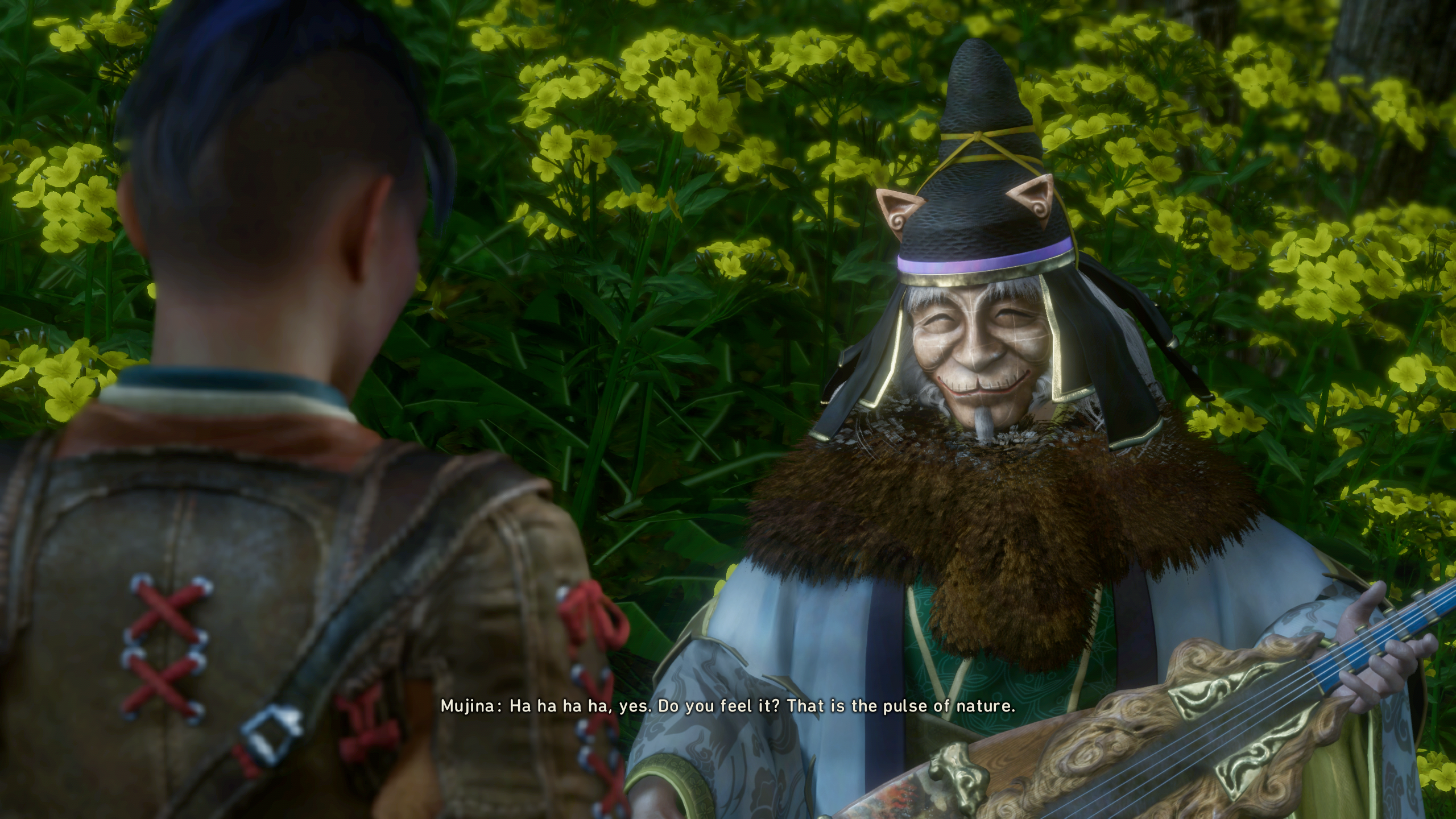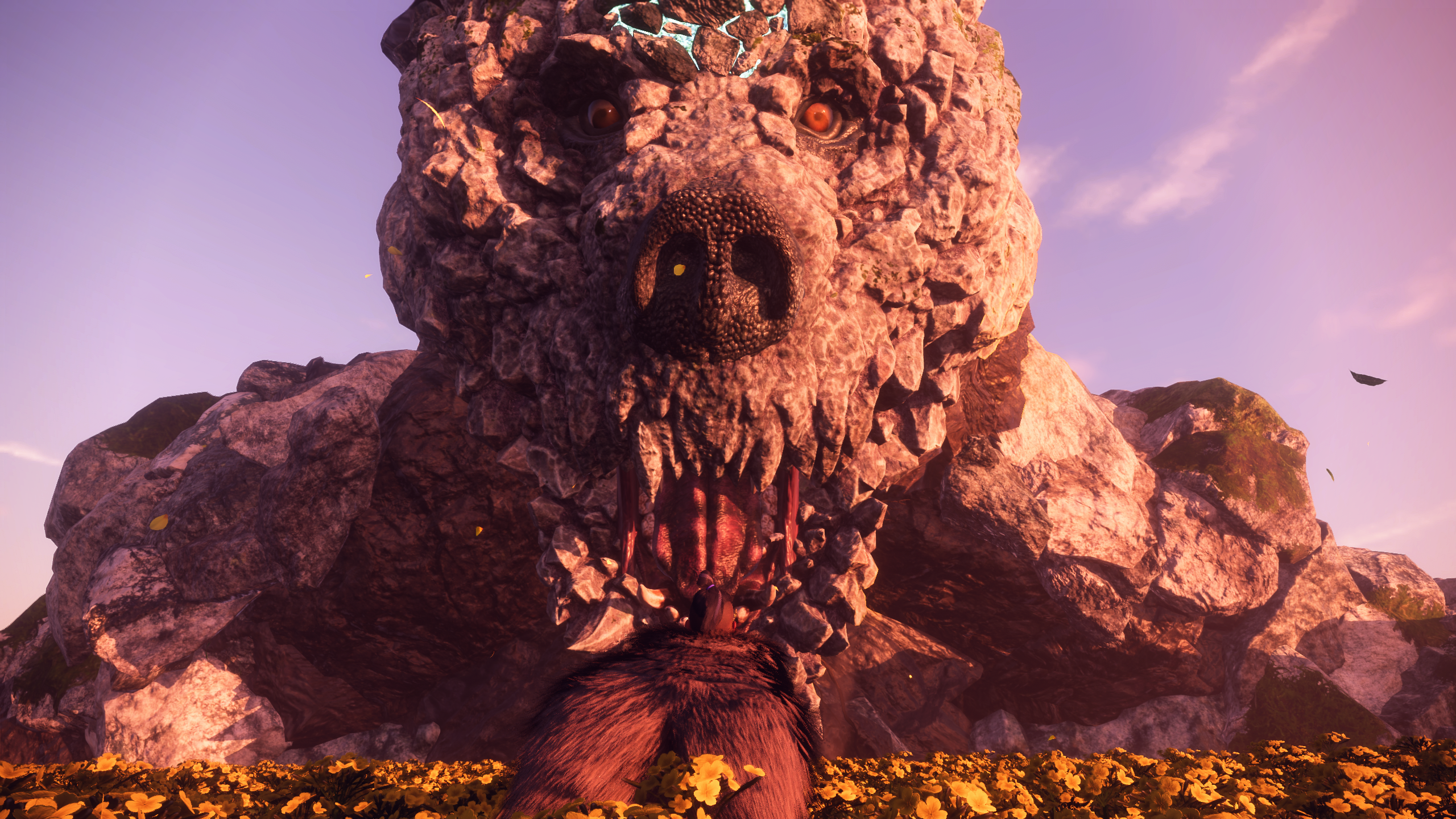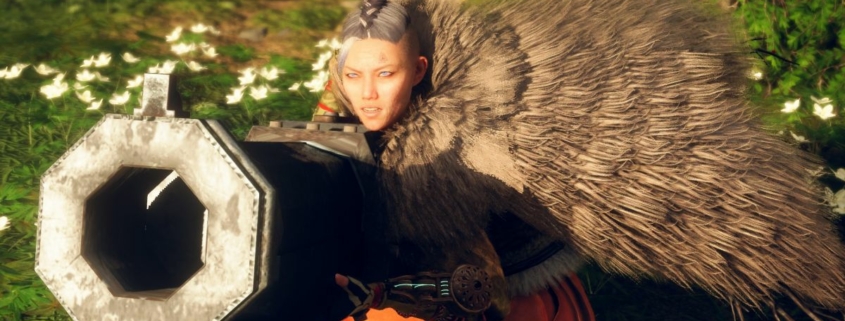Wild Hearts review-in-progress: Stuck in a monstrous shadow

My parents didn’t have a lot of money when I was growing up, but we were still a Cheerios household. Actually I preferred the sugar bomb of Cinnamon Toast Crunch, but the point is we could at least afford genuine Cheerios instead of “Nut O’s” or “Tasteeos” or whatever the store brand was called. As a kid I cared about that name recognition, the same way I lusted after a pair of Nikes or a legit Jansport backpack. As an adult now rudely forced to pay for cereal out of my own pocket, I’m a lot more inclined to try out the off-brand cereal.
That’s what playing Wild Hearts feels like—I’m taking a risk with the underdog, hoping that another action developer can actually do Monster Hunter just as well as Capcom, if only someone would give them a shot. So far there are some glimmers of great action, but poor PC performance, a shallow monster pool and a fiddly equipment mechanic all dilute Wild Hearts’ attempt at imitation.
Monster, uh… fighter
The line that developer Koei Tecmo is walking here is blatant: You can picture the writers sweating as they try to contort dialogue around the words “hunt” and “monster” while every conversation is about the monsters you need to go out and hunt. The resulting world feels slightly less outright fantasy and slightly more folklore. It’s explicitly set in feudal Japan and sticks with the Japanese words for much of its text: kemono (beasts, not monsters!) for the behemoths you fight; karakuri for the contraptions you build to help on your hunts; tsukumo for the mechanical creatures that serve as your AI companions.
The small cast of characters, like the blacksmith Natsume and the washed up samurai Ujishige you meet in the opening hour, are more subdued than Monster Hunter’s campy anime hunters and buff cat chefs. Wild Hearts is deeply earnest, a change I appreciated at first and then quickly tired of since it results in every character droning on about how they want to protect the town and clumsily confessing their bog-standard NPC backstories. After a while I started taking my headphones off whenever someone was talking.
…much of the time it’s frustratingly clunky.
I truly can’t imagine anyone playing this sort of game for anything other than sticking monsters with the pointy end, anyway, and there Wild Hearts mostly nails it. There are eight weapons, a lean arsenal that ends up being full of surprises. My favorite is the bladed wagasa umbrella, which attacks by spinning like a top and powers up when you parry enemy attacks. It’s the only weapon in the game with a defensive option, which kept me alive and made me look like a cracked Mary Poppins in action.

The shapeshifting karakuri staff might as well be four weapons in one: every hit you land can be comboed into a form shift with its own set of attacks. The starter weapon, a katana, “awakens” when you fill up a hit meter, unfurling into a whip-like longsword that you can swirl around you in a flurry of cuts. Wild Hearts is still pretty anime, it turns out, at least when you’re in the thick of the action.
The kemono battles are all worthy of these weapons and their complex movesets. Each fastidiously animated beast has some kind of elemental affinity and a “Mother Nature got shitfaced” design, like the sapscourge, a sap-covered, pollen-spewing asthmatic nightmare, or the goldshard, a porcupine with giant crystals for spines. Some of the designs really surprised me in a good way, going beyond their obvious gimmick. The lavaback, a giant flaming gorilla, seems straightforward until he’s enraged—then suddenly he uses his molten arms like stretchy rubber bands to slingshot himself at you feet-first.
Some of the kemono designs are clear standouts, but Wild Hearts recycles them disappointingly quickly—there are some clearly shared moves and archetypes as soon as you reach the second area, and later you get the standard elemental remixes of some monsters where you swap fire for ice. These are still tough, exciting fights, and my strategy going up against a kemono completely changed depending on what weapon I was using. But the variety can’t compare to Monster Hunter’s deep roster, at least in the four (out of five) zones I’ve explored so far.
In 30ish hours, I’ve fought only 11 fully distinct monsters, and one of those is a gimmick battle I’d barely count.
Wild Hearts’ one big new idea for combat is letting you build traps and defenses mid-combat. You conjure karakuri out of thin air by holding down right-click and pressing one of a few keys—at first you’re spawning simple crates to leap off or springs that’ll catapult you towards a monster, but soon you’ll unlock combinations that erect a defensive wall or shoot off fireworks to flashbang a flying monster out of the air.
I appreciate that it cuts out loads of bloat, but that leaves some core parts of the experience anemic.
These sometimes lead to thrilling moments, like using a spring to just dodge a monster’s charge and unleashing your own attack mid-leap, but much of the time it’s frustratingly clunky. Sometimes I’d use all my build ammo while right in front of a monster and the karakuri would instantly explode because it was too close; other times I’d hit C when I should’ve hit Q, flubbing the combo and just stacking a bunch of useless shit in front of me. Move a little too much while you’re building and the karakuri can go down in the wrong place, also ruining the combo placement.
Like building in Fortnite, I expect we’ll see some amazing high-level play from master hunters who gel with the karakuri system, but I mostly found it annoying I couldn’t press a single hotkey to build what I want instead of fumbling in a menu mid-fight.
Leveling pains

The more of Wild Hearts I’ve played, the more I’ve found it notable what it doesn’t lift from Capcom’s series. There’s just a whole lot less stuff, and that’s actually kind of a relief. Monster Hunter is famously one of those games that overwhelms you with systems and sub-systems and side activities and a bajillion types of items all on top of combat that takes hours to learn. You grind certain resources to make gear, and other resources to level up that gear, and yet more resources to augment that gear; there are different types of hunts and research tracks to advance. The latest, Monster Hunter Rise (opens in new tab), gave you a dog and a cat companion to customize, level up, and take on hunts with you—and a whole separate system for recruiting more feline companions to send off on their own missions.
Wild Hearts is tame by comparison. There’s a single resource for upgrading your tsukumo hunting buddy, armor has a single upgrade tier, and there’s almost no fussing with item crafting or stockpiling potions or bombs or any kind of supporting gear. This game does not give you the sense that it wants you to play it for 300 hours. I appreciate that it cuts out loads of bloat, but that leaves some core parts of the experience anemic.
Some of the weapons are sublime, and many of the monsters would rank higher than Capcom’s pack on my personal tier list
Gear progression is slow and deeply unsatisfying. There are no little steps here to make yourself feel incrementally tougher, just upgrades that give your armor a human or kemono “affinity” which seems woefully underbaked. More than 20 hours in, only 22 of the 60 pieces of armor I’d unlocked were actually eligible for one of these upgrades, and I’ve yet to benefit from a single extra skill they impart. Wild Hearts loves to give you perks like “3% fire resistance” with scant opportunities to stack the same effect. Nobody gets excited about 3%.
The weapon skill tree looks enormous and exciting at first—until you realize there’s a singular upgrade tree that applies to every weapon in the game, which really takes the wind out of it. I do appreciate that you can recoup any spent resources to reconfigure weapons as many times as you like, though, encouraging you to pick the right elemental affinity for a battle.
If a few of these features were more robust, Wild Hearts might’ve been able to pass as a shrewdly streamlined hunting game. But surprisingly weak PC performance—I barely got an average of 60 fps at 1440p, on my i5-13600K and an RTX 3070 and a mix of medium and high settings—and graphics on par with 2018’s Monster Hunter World (opens in new tab) make it feel more budget-constrained than aerodynamic. (One later area even tanked my framerate down into the 30s and 40s).
Some of the weapons are sublime, and many of the monsters would rank higher than Capcom’s pack on my personal tier list, but everything outside the heat of the fight could’ve used a little more love.
After 30ish hours, I am not a Nut O’s Wild Hearts convert. Deep down I was hoping for an exciting discovery, to find something bold in this game about slaying giant mythical beasts that I liked better than the big established brand. But so far it’s mostly a less flavorful Monster Hunter.
If I’m hungry for smashing giant boars in the face with a comically large mallet (please don’t judge my extremely specific cravings), Wild Hearts is plenty filling. There’s just not much reason to pick it first off the shelf.
Source link




